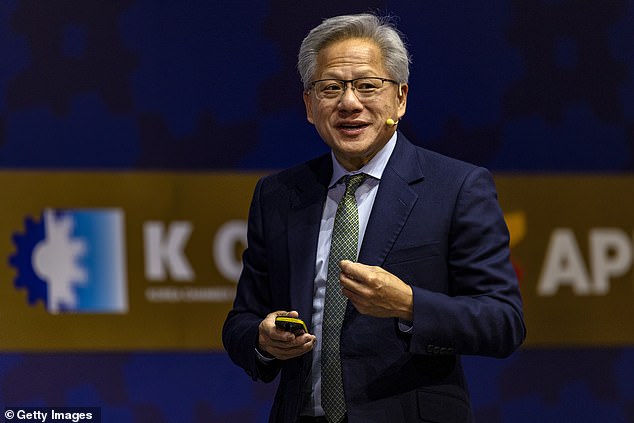Any lingering doubts about the promise of the artificial intelligence should have been wiped away by Tuesday’s blockbuster earnings report from chipmaker Nvidia.
The US technology firm didn’t just exceed Wall Street’s predictions, they obliterated them, beating fiscal third quarter expectations by more than two billion dollars and fourth quarter projections by even more.
This proves – even in the face of a recent cooldown in AI-linked stocks – that the AI revolution is here. In fact, we’re living through the true birth of the Fourth Industrial Revolution and Nvidia – lead by visionary AI godfather Jensen Huang – is fueling it.
I’ve spent nearly three decades as a technology analyst. I watched the internet bubble inflate with hype and hysteria in 1996 and, eventually, burst in 1999, destroying an estimated five trillion dollars of hard-earned investment money with it.
But this is no 1999 moment.
Here’s why…
My firm Wedbush Securities, where I am the global head of tech research, tracks businesses which have begun integrating AI into the way they do business. We’ve found that only three percent of US firms have even started going down the AI path. Around the world only one percent of companies are on the AI train.
Meanwhile, businesses that have adopted AI are already showing positive results.

Any lingering doubts about the promise of the artificial intelligence should have been wiped away by this week’s blockbuster earnings report from chipmaker Nvidia. (Pictured: Jensen Huang, Nvidia CEO and president)

The US technology firm on Tuesday didn’t just exceed Wall Street’s predictions, they obliterated them
This week Walmart shook off fears of a slowing US economy, reporting strong third-quarter revenue, up 5.8 percent year-over-year, and raising it’s full-year outlook. The discount giant is investing heavily in AI to create personalized shopping experiences.
Take AI-powered data analytics company Palantir. Just two years ago, Palantir had no commercial business. Today, it’s pace to approach one billion dollars of revenue, without even tapping into the consumer market.
By 2030, I project that 20 percent of cars are going to be autonomous. Companies, across vast categories, will find new AI use cases. Meanwhile the return on AI investment is already demonstrable.
The space for this enterprise to grow is mind-boggling.
In the short-term, I believe Nvidia will enter the $6 trillion market cap club over the next 12 to 18 months. In the long-term, I see Nvidia being in year three of a 10-year bull run. It is going to take a decades to fully build out the foundation for this AI revolution – and the Nvidia chip is the only game in town.
And here’s something else to consider, Wedbush estimates that there’s an eight to $10 multiplier on every dollar spent on a Nvidia chip, while Big Tech’s capital expenditures could approach $550 billion to $600 billion in 2026 alone.
In other words, as the world’s major technology companies pour billions of dollars into Nvidia, they’re spending up to 10 times as much on the software, infrastructure and data centers to power their tech.
A rising tech tide will lift all ships.

My firm Wedbush Securities, where I am the global head of tech research, tracks businesses which have begun integrating AI into the way they do business. (Pictured: Dan Ives in 2025)
Now, that’s not to say that they aren’t concerns.
It’s true that a small group of companies have dominated the AI trade and there are, of course, valuation fears. But the Tech Bears have missed every transformational technology stock over the last two decades.
If Nvidia’s results showed us anything it is that this party is well underway. I got the invite at 9pm. It’s now 10:30pm and this thing is going strong till four in the morning, but the bears will still be watching through the front window.
Finally, pause for a moment of national pride. For the first time in 30 years the US is leading China in the technology race as American companies – Nvidia, Microsoft, Google, OpenAI, Palantir, Oracle and others – compete for more global market share.
I wouldn’t have it any other way.